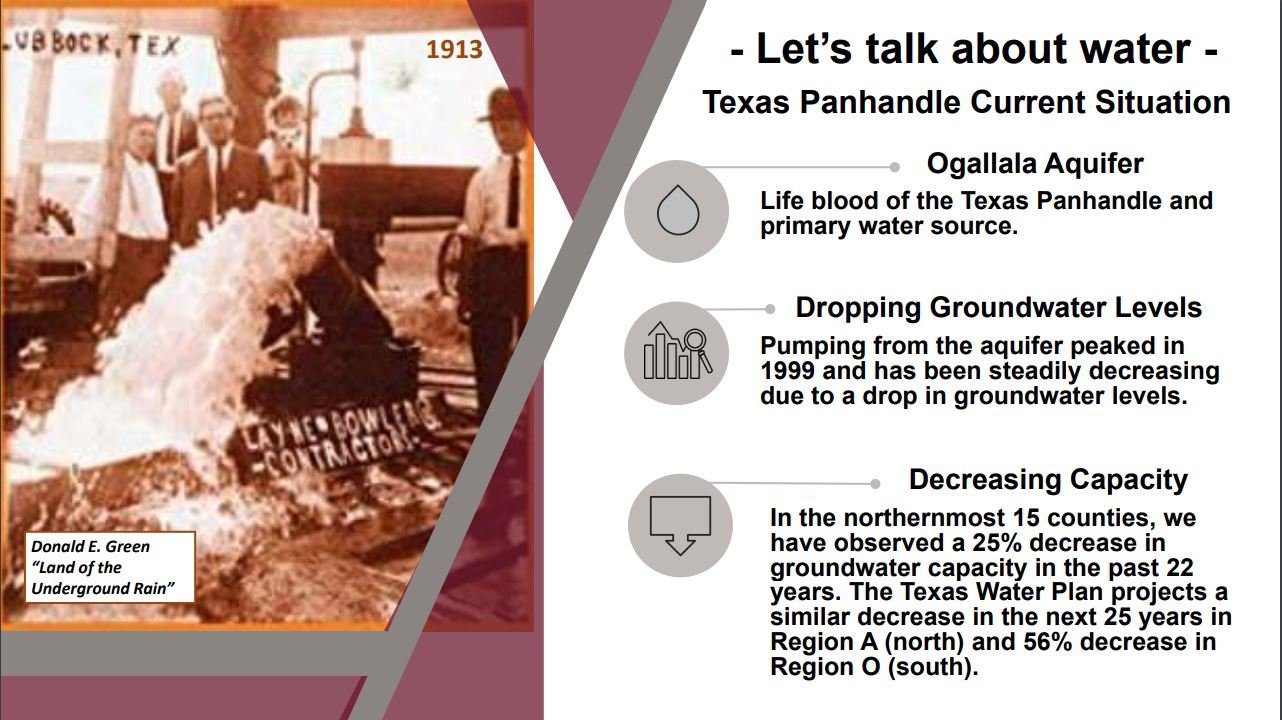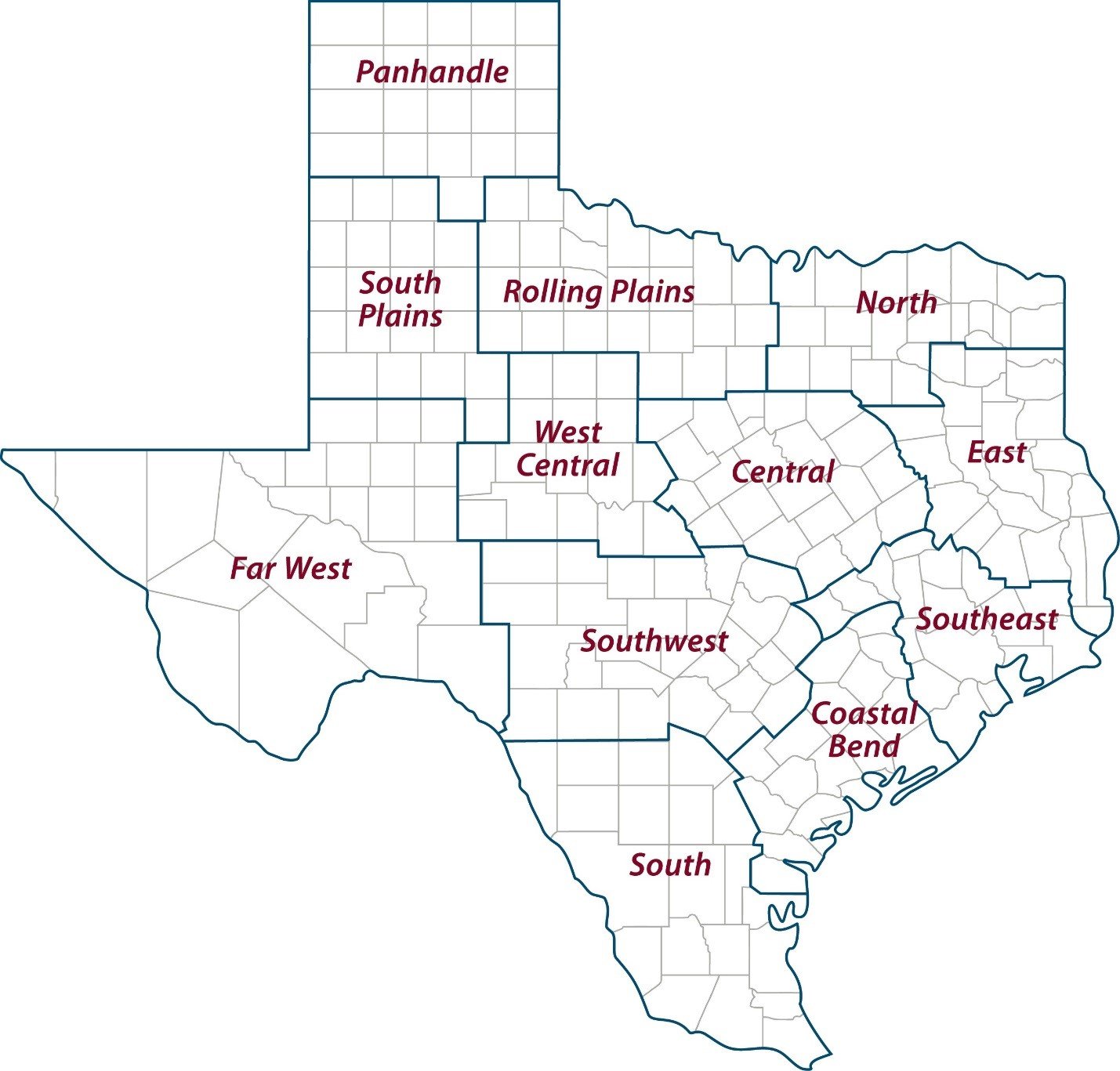Community concerns, social networks ground N. Texas study
$299,198 in funding and matching support
Context: 25% decrease in groundwater pumping capacity over the past 22 years
Crop Acreage Allocator Tool
A research team from West Texas A&M University, Texas A&M AgriLife, USDA-ARS along with extension agents, crop consultants, producers and others are working together to support shifts in field and irrigation management.
“In some ways, this project is more of an Extension Outreach project than research,” says project principal investigator Dr. David Parker (West Texas A&M University). Their work is taking place in the TX Panhandle region, situated over the Ogallala aquifer, where the capacity of wells to produce water continues to decline.
Farmers here need user-friendly and economically straightforward information they can trust to determine how, when, and where to use limited water supplies to support their operations today and into the future.
The team is working on three primary objectives in 2023: 1) Developing a decision support tool to optimize the dedication of acreage to different irrigated and dryland crops, 2) Evaluating the impact of reduced tillage on soil moisture, and 3) Facilitating easy online access to data from a variety of soil moisture sensors as part of a peer-to-peer effort aimed at encouraging farmer and crop consultant confidence in interpreting data trends to support real-time decisions.
“Farmers really must adapt to farming methods that use less water, and are looking at ways to conserve and make the most of the water that they do have. Many farmers are accepting this challenge head on, while others are a little more resistant. ”
-Dr. David Parker, West Texas A&M University
Acreage Optimization Tool- This tool, which is being co-developed with regional producers, will make it easier for farmers and crop consultants to assess different production scenarios of concentrating water applications on fewer acres and gauge related likely impacts in terms labor and operational bottom lines. The tool will also planning around growing year weather conditions (drought, average, and wet), including navigating multi-year drought situations, in some cases by managing multiple crops simultaneously under a center pivot irrigation system.
Reduced Tillage- Little research on reduced tillage methods has been conducted in this region, relative to other parts of the nation. To help address this knowledge and practice gap, the team has partnered with a farmer to test crop water efficiency and yield under one of his 120-acre pivots, gathering soil moisture levels and yield data in sections managed using conventional tillage, no-till, and strip-till practices.
Overcoming Barriers to Using Soil Moisture Sensors- Initial costs for the technology, figuring out where to place probes and how to install and calibrate them properly, plus annual subscription fees for the software/application, time and labor to learn how to interpret their data factor can all make using soil moisture probes a daunting prospect.
To help demystify how they work and help show what the return on investment of money and time might be, the team will be field testing and showcasing data online from multiple kinds soil moisture sensors, providing guidance and training on interpreting soil wetting and drying data trends. This website set up for this will also provide soil moisture probe cost comparison and other information related to sensor installation, calibration, and maintenance.



